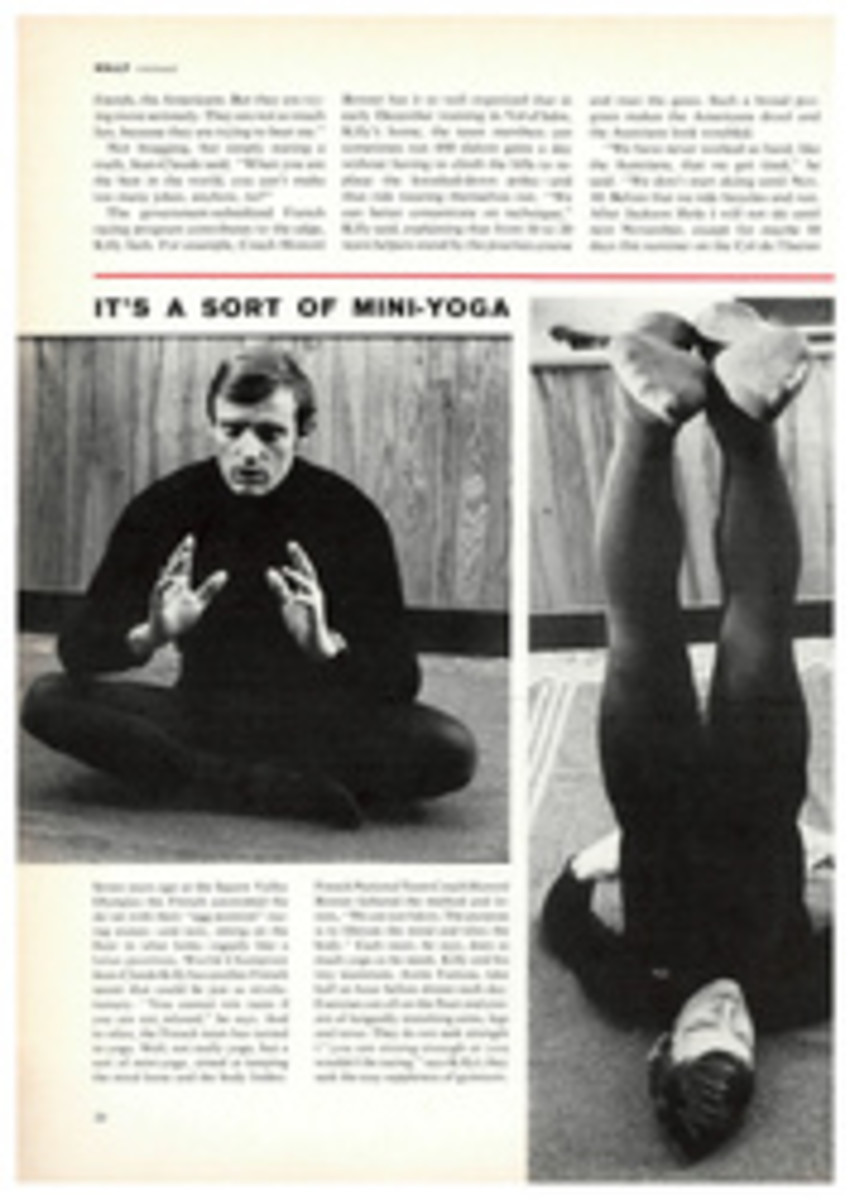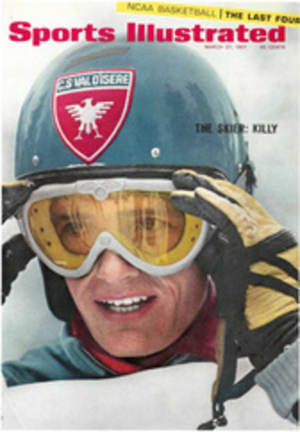
THE GAME ON THE EASTERN SHORE
Throughout the school year they carry lacrosse sticks around the campus of Washington College, flipping the hard rubber ball back and forth as they walk between classes. But spring is the real season for the game, the time of informal practice on the green lawns and serious sessions on Kibler Field. Tiny Washington takes on many of the country's top lacrosse teams, representing schools many times its size, and in 10 years it has had one losing season. Washington was founded in 1782 at Chester-town, Md., on the Eastern Shore of Chesapeake Bay, and it comprises a handsome collection of rosy-brick, white-framed Colonial buildings, a campus decorated with dogwood and cherry trees and 18th century black-iron lanterns, and a student body of about 600 men and women. If the atmosphere appears easygoing in the pictures on the following pages, there is nothing easy about getting into Washington and staying there; academic standards are high. Half of the 250-odd men take part in intercollegiate competition in at least one of eight sports, but lacrosse is Washington's pride, as it is at many schools in Maryland, starting at the grade-school level. At Washington, certainly, that pride is justified.
Lacrosse people talk about a "northern" game and a "southern" game as if there were a divider at the Mason-Dixon line, and the sense of distinction is reinforced by the traditional North-South All Star Game at the end of the season. The northern game tends toward power and combativeness, the southern toward speed and stick work, but in recent years these images have been blurred, if not obliterated, with the steady interchange of players and coaches north and south. Still, reasonable facsimiles of the original types can be found.
On the dirt field of New York City's cold Lewisohn Stadium in early spring, for instance, where City College players trip over the raised remains of baseball pitching mounds, teamwork seems to have become a lost—if ever discovered—art. The cheers and jeers of a handful of student rooters are in keeping with the general picture of college lacrosse, northern style: "Whadya gonna do, George, hit 'im with ya pocketbook?" "Forget the ball, go after him."
At Washington College, by contrast, the game is played in a treelined valley, on tenderly nursed turf punctuated by shiny orange-netted goalposts and surrounded by freshly whitewashed lines. The wooden grandstand and grassy banks are crowded with middle-aged adults as well as students, and their responses reflect a knowledgeable appreciation of the finesse on the playing field.
It is no wonder that at Washington lacrosse facilities are flawless and the game's intricacies understood. The school annually fields the best small-college team in the country, emerging frequently at year's end with a ranking in the nation's top 10, regardless of classification. Last season Washington won its division (Strobhar) title for the fourth straight time, and three of its players—Bruce Jaeger, Paul Rudolph and Dave Svec, all from Baltimore—were chosen to play for the South in the All Star Game. The South's coach was Washington's Donaldson Kelly. After his team beat the North 13-5—Jaeger led the scoring with three goals and two assists—Kelly was chosen Coach of the Year by the Intercollegiate Lacrosse Association.
In his own playing days at Johns Hopkins, 54-year-old Kelly won 11 varsity letters—in lacrosse, basketball and football—and was a four-time lacrosse All-America. He owns a Chevrolet-Buick agency in Chestertown—which is fortunate, since his monetary rewards as coach are approximately equal to those received by his players—and there are no athletic scholarships at Washington. Kelly's coaching philosophy is disarmingly simple. "You can't be tough," he says. "These boys are not paid for this. You have to make them accept the challenge of playing above themselves. We have always had big schools on our schedule—Navy, Army, Johns Hopkins, Virginia—and I try to make them want to do as well or better than the big ones. Meantime, I just try to teach lacrosse skill." Many of the large schools on Washington's schedule recruit football players for their lacrosse teams. Despite their lack of experience, footballers can quickly learn to play midfield and defense positions, where size and stamina often count for as much as slick skill. Washington does not even have a football program, but this does not faze Kelly. "Bigness isn't important, as it is in football," he insists. "In lacrosse it's all physical ability and smartness."
Kelly's star for the next few years is likely to be Attackman Ron Regan, a graduate of Baltimore's Boys' Latin School. (Younger brother Bruce Regan, the best high school player in Maryland in 1966, won a scholarship at Harvard, where he will contribute to the further breakdown of North-South differences.) Ron is the ideal Kelly-type player—fast, shifty and a brilliant stickman. He is surrounded by enough skillful teammates to insure another title for Washington in 1967. This year, too, Don Kelly enjoys the luxury of an official assistant for the first time, former Washington College Defenseman Bob Pritzlaff. Pritzlaff will be paid to coach, but, then, he has to handle wrestling also. Which, in a way, is what the game is all about on the Eastern Shore.
PHOTO
RICHARD MEEK
THREE PHOTOS
RICHARD MEEK
Disrupting assault by North Carolina, Washington's Mark Madden (center) knocks ball loose from attackers in front of goal. After game, won by Washington 9-2, Dave Svec poses with girl friend Peggy MacKillop (above), and Ron Regan is congratulated by his mother and brother, Bruce.
PHOTO
RICHARD MEEK
An equipment bag in one hand, sticks in the other—the look of those who play the game.

